You know you’re writing a formal email if you have to pause and wonder, “Is this too casual?” or “What salutation should I use?” or “Is this the right tone?”

When I entered the working world, I found myself staring at my inbox and watching the cursor blink. I would second guess my word choice and read the message multiple times to make sure it felt right. However, after trial and error, I’ve found writing a formal email doesn’t have to be a struggle.
Using these formal email guidelines is a surefire way to make sure your business emails have the right not. You’ll always send the perfect message, whether you’re reaching out for the first time or just following up.
Table of Contents
- What is a formal email?
- When to Write a Formal Email
- How to Write a Formal Email
- Formal Email Template
- Formal Email Example
What is a formal email?
Formal emails are messages that require a high level of formality. Usually, you don’t know the recipient or only know them in a business context. You may be messaging a client or a potential employer. The goal is to convey respect and professionalism while getting your message across.
When to Write a Formal Email
A formal email is used when conducting business, sending a professional inquiry, or corresponding about a job. Let’s explore some common scenarios that require formal emails.
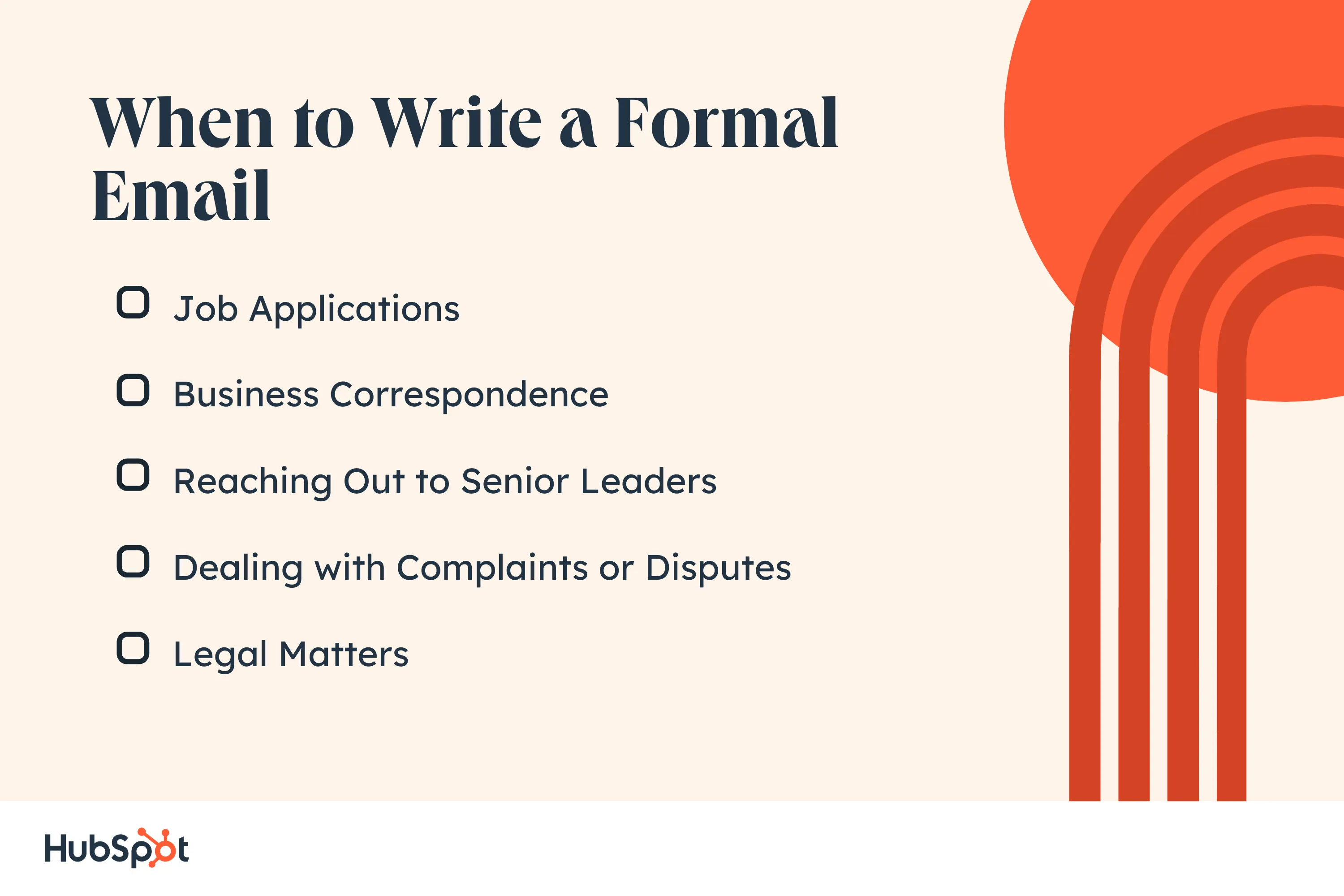
Job Applications
When applying for a new role, you want to put your best foot forward. So, in your emails, you’ll need to demonstrate your professionalism and seriousness. You’ll likely include a cover letter-like message with a formal tone to impress the recipient.
Business Correspondence
Formal emails are often used when conducting business. That includes reaching out to clients, contacting business partners, or requesting information from suppliers. Here, you’re looking to show the recipient that you take your role seriously, and you hope they do the same.
Formal emails are also a great way to show prospective clients that you respect their time and can handle their situation with care.
Reaching Out to Senior Leaders
Depending on your role and your organization’s culture, you may need to write formal emails when working with senior leaders. This is especially true when making a request or seeking help from these authority figures. A formal email shows that you respect them and acknowledge the hierarchical structure of the workplace.
Dealing with Complaints or Disputes
In the business world, roadblocks are inevitable. When discussing these challenges, you’ll want to write formal emails. This is true whether you’re working with a colleague, client, vendor, or manager. Clear, concise communication maintains a professional tone and increases the chances of a resolution.
Legal Matters
If lawyers or regulatory bodies are involved, keep your emails formal. Precise language and a formal tone are essential in these situations. Certain phrases have very specific meanings, and you’ll want to make sure you get it right.
How to Write a Formal Email
- Greet appropriately.
- Check your email address.
- Choose a professional font.
- Craft your subject line.
- Introduce yourself.
- Keep things short and concise.
- Use a formal close.
- Include a professional signature.
- Proofread.
1. Greet appropriately.
First, choose an appropriate greeting. Casual introductions like “Hey,” “Hi there,” or just the person’s name should be reserved for casual correspondence with friends, family, and familiar colleagues.
If you’re addressing an executive, business associate, or prospect, take a more formal tone. Here are a few formal email greetings to consider:
- Dear [Name],
- Hello [Name],
- To Whom It May Concern,
- Greetings [Name],
- Dear [Department Name],
- Dear [Job Title],
- Dear Search Committee,
- Good Morning, [Name],
- I hope this email finds you well.
When in doubt, always choose a greeting that’s more formal than casual. One salutation to kick to the curb for good? “Dear Sir or Madam.” Here’s why.
What we like: Dear [name] or Greetings [name] are tried and true. They’re easily the most recognizable greeting for an email and keep a professional tone no matter what the situation.
2. Check your email address.
If you’re not sending an email from your work alias, revisit your personal email address to make sure it’s professional and reflective of your current life stage.
If you’re still rocking that sk8rgurl2003@aol.com address, consider updating to one that includes some combination of your first and last name. This ensures your first impression is authoritative and adult — and not the early 2000s equivalent of a trucker hat.
Pro tip: Keeping your email more formal is definitely the way to go. Using your name or initials with a unique sequence of numbers is always preferable over a more personalized email address.
3. Choose a professional font.
Read: Ditch the purple Comic Sans. While you might prefer to use the Papyrus font in your personal correspondence with friends and family, keep your professional emails distraction-free by choosing Arial, Times New Roman, or Calibri.
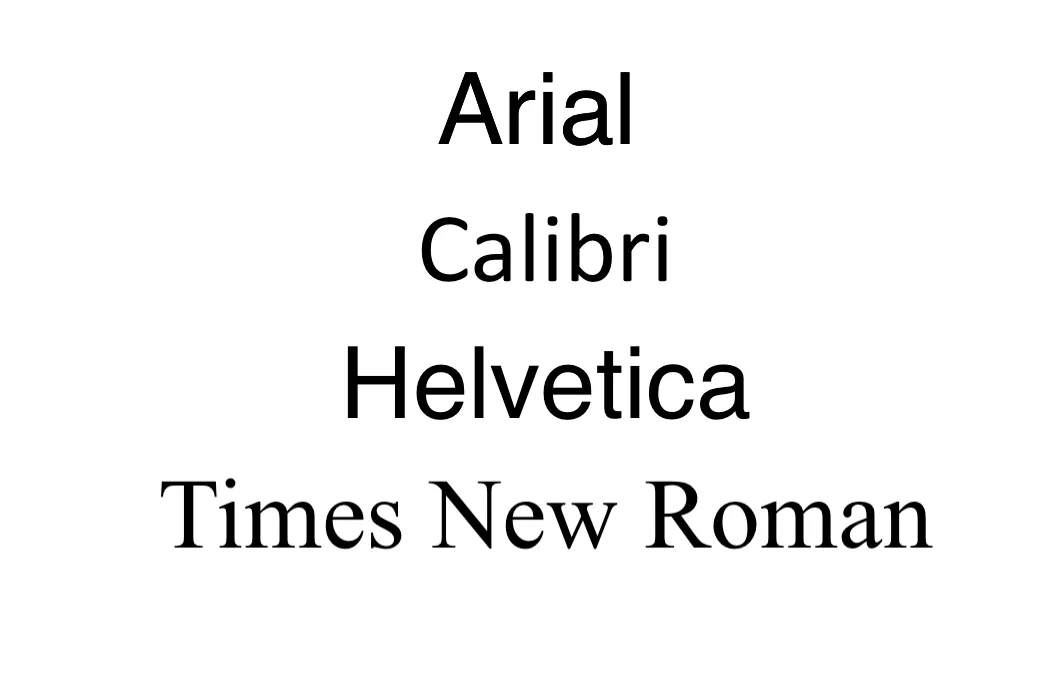
After all, you want the first thing your reader notices to be your message, not your font.
What We Like: Arial is a base font and is most commonly supported. Keeping it simple enhances your presentation, allowing the reader to focus on your message rather than the font.
4. Craft your subject line.
Keep your subject line to seven words or less for optimal open rates, and don’t try to dazzle your reader with extreme subject lines in the first email. Before you write your subject line, ask yourself three questions:
- “Who is my audience?” Is it an executive, a marketing manager, or maybe a small business owner? Knowing who your audience is will help with step number two …
- “What do they care about?” Your subject line is your reader’s first impression of you (minus your email address). Make it count by focusing on something they care about. That might be a mutual connection, a business pain point, or a meeting you’ve already scheduled. Make your subject line relevant to them and earn the email open.
- “Does my subject line reflect what’s inside?” Never try to trick your recipient into opening your email. If you send a message with the subject line, “Regarding next week’s call,” and you have no such call scheduled, you’re asking to get marked as spam and lose all trust and credibility.
Short, clear, and concise is the best way to open formal correspondence. Here are some subject line examples:
- “RE: 6/8 demo call with HubSpot.”
- “[Mutual connection] recommended we chat.”
- “Meeting RE: Demo call with HubSpot.”
- “Follow Up RE: Phone call with HubSpot.”
- “Question about [goal].”
- “Hi [name], [question]?”
- “A [benefit] for [prospect’s company].”
- “We have [insert fact] in common.”
Want more great subject line inspiration? Check out this list, guaranteed to get prospects to open, read, and respond.
Pro tip: In this instance, you want to keep it situational. Keep in mind who your audience is and what you’re trying to convey. Work that information into the subject to keep the experience more eye-catching from start to finish.
5. Introduce yourself.
Your first sentence should tell them who you are — without telling them your life story. Many of us start emails with our name, title, company, and what our company does.
Many of us also receive emails like this and skim through the first paragraph because we just don’t care yet. We want to know what the sender can do for us, not who they do it for and why.
Here’s what not to do:
Dear April,
My name is Leslie, and I’m a park director with the Indiana Parks and Recreation Department. We’re dedicated to making Indiana parks more beautiful and visitor-friendly.
I’m reaching out today to see if you would be interested in learning more about our summer initiative to get more kids outside and to the parks. I know you run a summer camp, and I’d love to talk about partnering with you to use our parks for certain outdoor activities.
Let me know if you’d like to learn more.
Sincerely,
Leslie Knope

This email is long; it spends too much time telling April who Leslie is, and it never addresses how using local parks will benefit April and her summer camp. Instead, try this greeting:
Dear April,
Do your summer camp kids (and counselors) ever need a change of scene after a week or two in the same location? I’m Leslie Knope with the Parks & Rec department, and I’d love to help your campers burn off some energy in our local parks this summer.
If you’d like to learn more about our summer parks program, book time on my calendar here: [Insert calendar link]
I hope to speak with you soon.
Sincerely,
Leslie Knope

This email is shorter, leads with the benefit, and follows up with Leslie’s name and company name only. It also closes with a clear call to action. More impactful? I’d say so.
What we like: Introducing yourself right away is paramount to the process. Keeping your intro to the first sentence of the body of your email helps keep your reader informed. Your audience is less likely to continue if it isn’t apparent where this email is coming from.
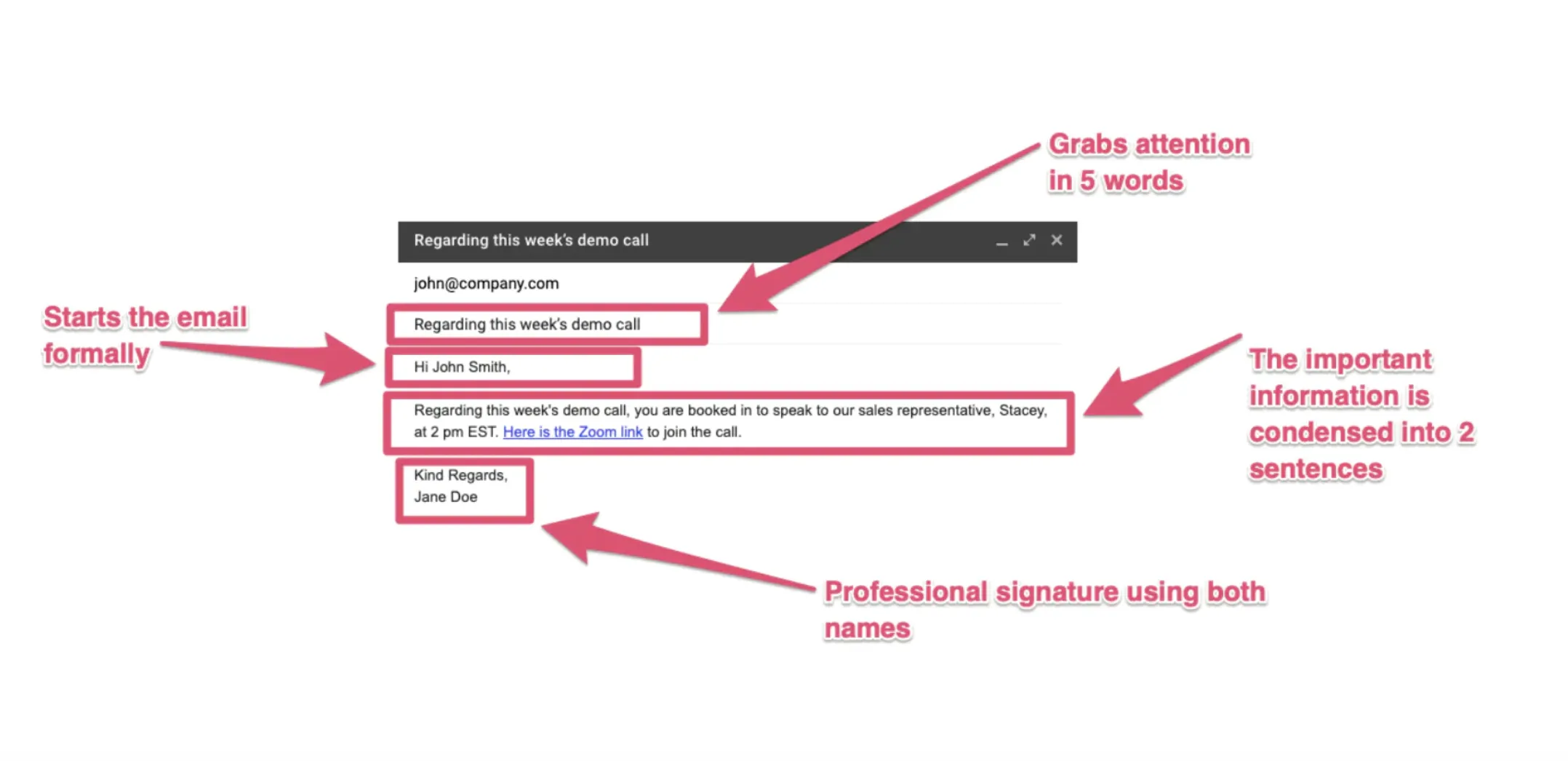
6. Keep things short and concise.
As discussed above, don’t burden your professional emails with a lot of “fluff” or information that doesn’t matter to your recipient. Edit your emails for length and clarity. Add bullets, new paragraphs, and lists wherever you can. These formatting tools can make your email easier to read and more impactful.
Here’s an example of what not to do:
Hi Ron,
My name is Donna, and we met at the Carpenters of Indiana conference last week. I wanted to follow up with you regarding some contract work for a few of my clients. Specifically, I need someone to make 50 park benches, three pergolas, and eight gazebos. I’m gathering bids from a few local carpenters and was hoping you could provide me with a quote for these projects by the end of the week.
Thanks,
Donna Meagle

This is clunky; it’s hard to discern the most pertinent parts of Donna’s message, and the language is a bit too casual. Instead, try this:
Hello Ron,
My name is Donna, and we spoke at the Carpenters of Indiana event last week. I’m currently collecting bids for the following projects:
- 50 park benches
- 3 pergolas
- 8 gazebos
I need these projects done no later than June 6, 2023, and I’m requesting all bids be returned by March 15, 2023.
Your work is impressive, and I hope we receive a bid from you.
Regards,
Donna Meagle

This email is much more direct, professional, and well-organized. It’s easy for the reader to skim, clearly features the most important information, and increases the likelihood of Donna receiving a response from Ron.
Pro tip: Short and sweet can definitely be useful, but don't undersell your message. You want to be to the point. Summarize the entirety of the purpose of the correspondence in a paragraph or two. Droning on will not keep the reader’s attention, but not providing enough information can be just as damaging.
7. Use a formal close.
Ready to bring it home? Make sure you close your email appropriately. Leave casual closing phases like, “Cheers,” “Thanks,” and “Best,” for close colleagues. Choose one of the following, more formal, closes below:
- Thank you for your time,
- Sincerely,
- Respectfully,
- Thank you,
- Looking forward to hearing from you,
- Have a wonderful day,
- Best regards,
- With gratitude,
- Will follow up soon.
.webp)
These sign offs carry the right tone through the last drop of your formal email. As you develop rapport with your business associates, it’s normal to pick up more casual and creative closes. Until then, these farewells are your best bet.
What we like: “Sincerely” is our top recommendation, another classic closing that effectively wraps up your message.
8. Include a professional signature.
If your email address is the first impression, your email signature is the last. Make sure it includes the following:
- Your name.
- Your contact information (phone number, website, calendar link, address).
- Your title.
- A professional headshot.
- A link to or badge for any professional accolades you’ve recently received.
- Links to appropriate social media channels (i.e., LinkedIn or Twitter).
Want to see examples of stellar email signatures from real people? Check out this roundup of professional email signature examples.
Pro tip: For most cases, including your full name and some basic info, such as job title or any contact info, is more than enough to close a now perfectly crafted email.
9. Proofread.
This might seem like a no-brainer, but you’d be surprised what you overlook when you’ve read the same email draft three times in a row.
Instead of trusting your eye, drop your email text into Microsoft Word and use their Review > Spelling & Grammar tool.
You can also copy and paste your message into Hemingway Editor to proofread for run-on sentences, comma splices, and other pesky grammatical errors.
Always double-check that you’ve spelled your recipient’s name and company name correctly. If there’s one thing that ruffles the feathers of my inbox, it’s seeing an email come through addressed to “Megan” when my name everywhere on the internet is listed as “Meg” or seeing someone tell me how much they love “Hubspot” when the correct capitalization is “HubSpot.”
What we like: Using the tools provided by your system will always be a benefit. Proofread and then run a spell check to make sure there aren't any misses.
Formal Email Template
Now that we’ve discussed the nine most important aspects of a formal email, let’s put them together to create a template you can use in almost any situation.
[Appropriate subject line]
Dear [Name],
My name is [Your name], and I’m reaching out to [insert the benefit you’re offering or the request you have of them].
[Two to three sentences supporting your main point and bulleted list or bolded terms when necessary].
[Include CTA when appropriate].
Kind Regards,
[Signature]

Want access to more email templates? Check out these templates, guaranteed to start a relationship with your prospect. And click here to learn how to find almost anyone’s email address without being creepy.
Formal Email Example
It’s hard to visualize a template in action, so let’s create an example using all of our best practices to bring the template above to life.
RE: Parks & Rec + Sweetums Proposal
Hello Nick,
My name is Tom Haverford, and we spoke last week about Sweetums’ proposal to be the exclusive supplier of lemonade to all Indiana parks in 2024.
I’d like to get a meeting on our respective calendars to discuss the following:
- When lemonade would be delivered to park refreshment centers
- Lemonade sizing and pricing
- Recycling efforts for used lemonade cups
Please feel free to book time on my calendar here: [Link to calendar]
Kind Regards,
Tom Haverford
Administrator, Pawnee Parks & Recreation
123-456-7890
See my latest article on our “Healthy Parks, Healthy You” initiative here.

Writing Great Formal Emails
Writing a formal email doesn’t have to be scary — and it doesn’t have to be stuffy. Use these nine tips for better professional emails and ensure your correspondence earns you the respect you deserve.

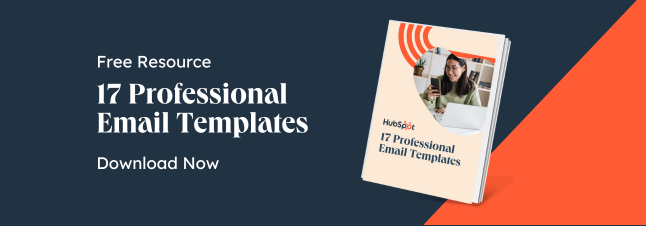


![23 Sales Email Templates With 60% or Higher Open Rates [+ Bonus Templates]](https://blog.hubspot.com/hubfs/sales-email-templates-2.jpg)
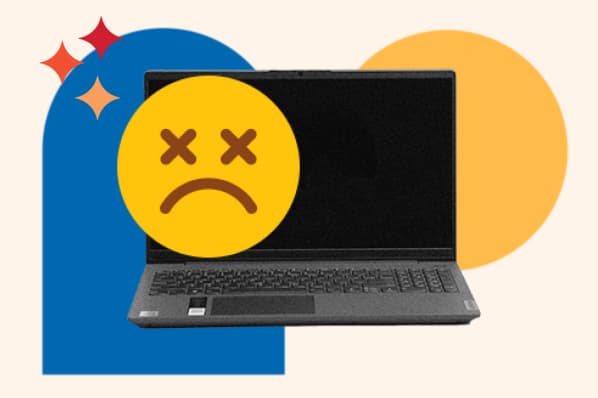
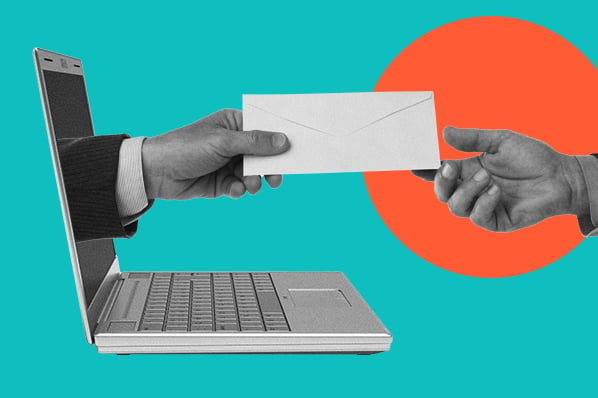

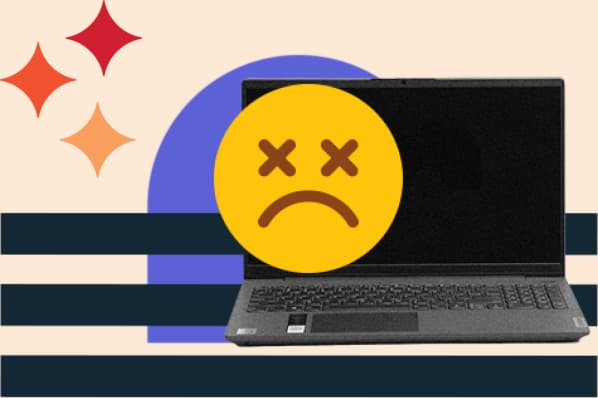
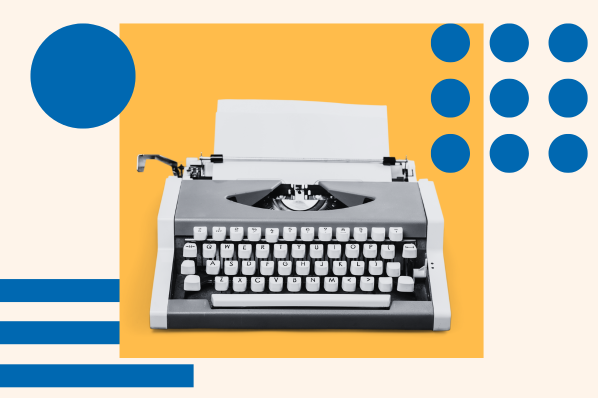
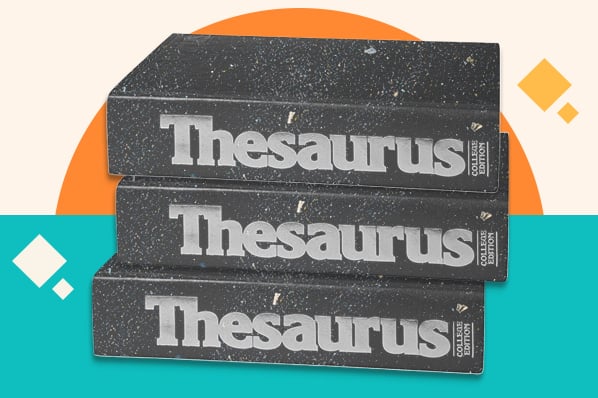
![How & When to Use an AI Email Assistant [+Tools to Consider]](https://blog.hubspot.com/hubfs/ai-email-assistant%20%281%29.png)